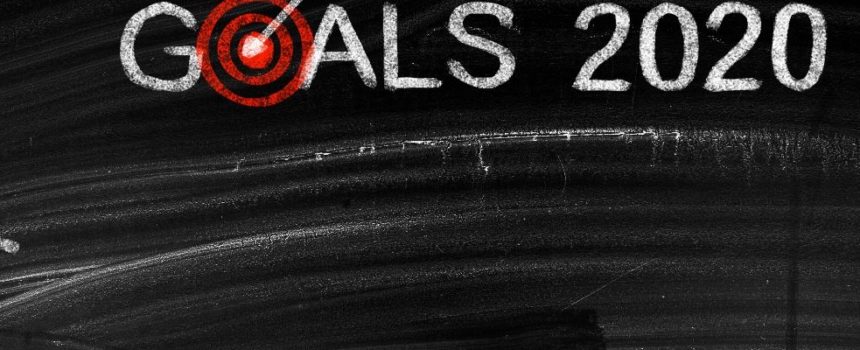How to Set A Goal:
It’s vital to have a goal that is realistic, specific, challenging yet still doable, and simple. If it’s too vague, too easy, too impossible, or not viable, then you’re setting yourself up to fail at your goal before you’ve even started. A good rule of thumb is that you should be hitting about 75% of the goals you set at the initial timeline you set for yourself. If your goals are too lofty and you only hit 10-15% of them, you’re going to feel defeated and not have the motivation to continue. If you are hitting 100% of your goals, they’re likely too easy and not really giving you the success or growth that you actually want. By setting a smart goal, you will have a much better shot at achieving it.
Breaking Down Your Goal:
Setting a specific goal is one of the most important parts of the process. If you don’t have a very clear, specific goal, then it is basically impossible to execute. If you have a long term goal, like a yearly goal for 2020, then it would be best to break the goals down into smaller parts. This could be a monthly goal, weekly goal, etc. The second part of setting a goal involves setting an accountability cycle. A goal is so much more than just something you want to accomplish, it is also how you are going to accomplish it and continue your work on it. If you have an accountability meeting once a week with your coworkers, manager, or other trusted person, then you can break your yearly goal down into smaller weekly goals, and then aim to meet that smaller goal before your next accountability meeting. This will keep you making progress.
Keeping the Goal Rolling:
If you are someone who abandons resolutions by February or struggles to maintain regular progress on your goals, even after setting accountability meetings, there are a few things you can do to help yourself stay on track. The first thing is to be very specific about the goal that you want to set. Being specific will help you in part two, which is to identify if you have delivered on the goal or not. It doesn’t need to be a long, drawn-out explanation, it can simply be: “yes, I hit my goal,” or “no, I did not hit my goal.” The third step is figuring out what the best course of action is. If you’ve hit your goal, great! Throw a mini party for yourself, and then set new goals. If you haven’t hit your goal, that doesn’t mean that you can just push it to the next month and have it be next month’s goal. Rather, it should be added to your list along with a new goal. If your target for November was to close a sale, but December 1st comes along and it hasn’t been closed, it doesn’t mean you can abandon December’s new goal in replace of November’s. Instead, add November’s goal to whatever your December goal is, and try to achieve both things by the end of the year. If you get these three pieces, you can really get the cycle going and raise your overall performance.
Make a Commitment To Yourself:
Everyone agrees that accountability is important, but so often we fail to hold ourselves accountable, deferring the responsibility to other people. While meeting regularly with a trusted other can be tremendously helpful, and is a very important part of actually achieving goals, the commitment must be a personal one first and foremost. Make a commitment to yourself. Then, empower your trusted other to help hold you accountable. This person should be used to you delivering, have hope that you will deliver, and be supportive when you do deliver. If you continually miss your mark, it becomes difficult for someone else to hold you accountable because they’ve lowered their expectations of what you can achieve. Making the commitment to yourself first and foremost will help you accomplish more of your goals.











Comments (6)
I need to go check, recheck and check again my goals book. Good read
cool
The article is great
Great
Great opportunity
Really good article, i liked it better yet it was easy to understand and relate with it.